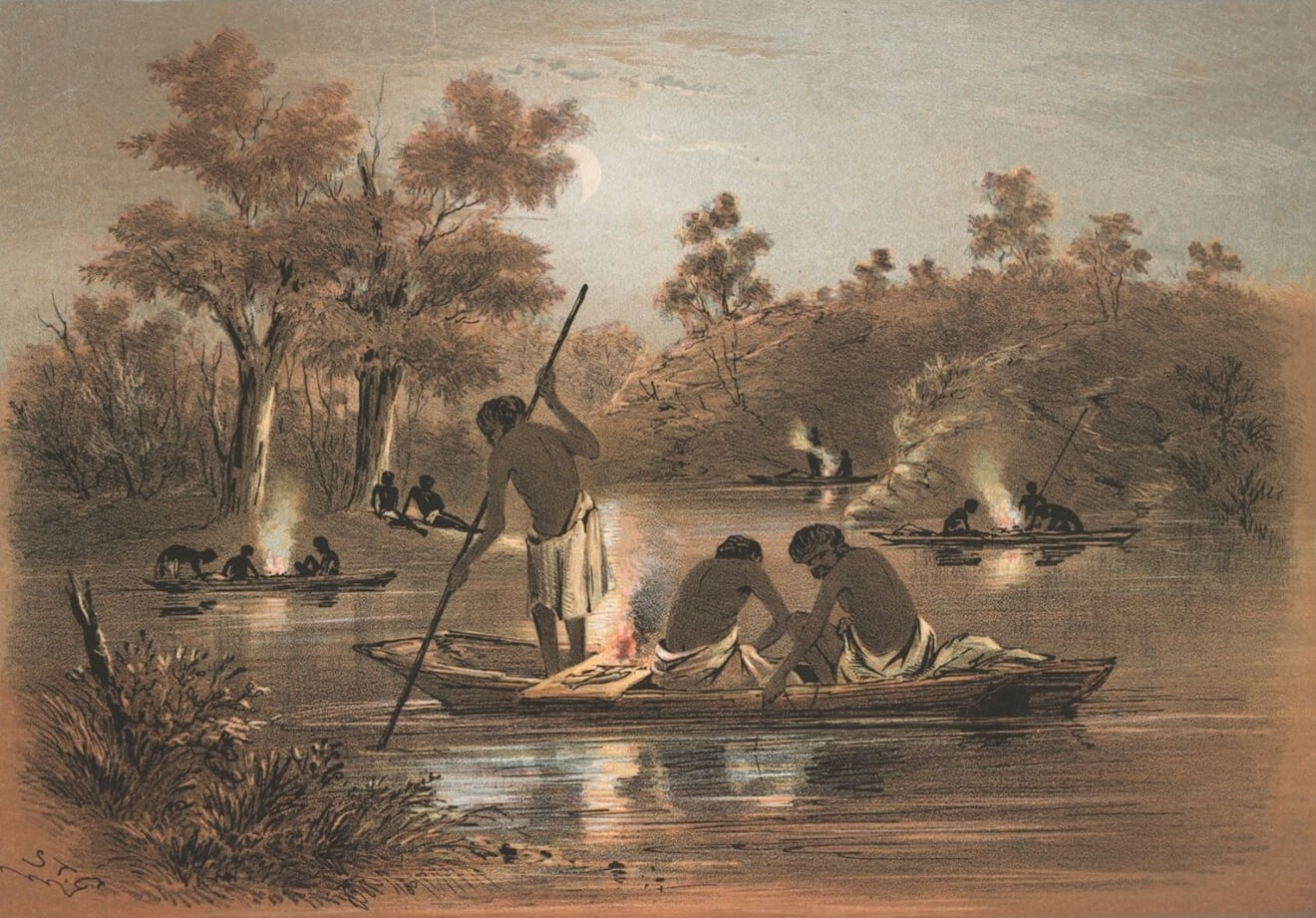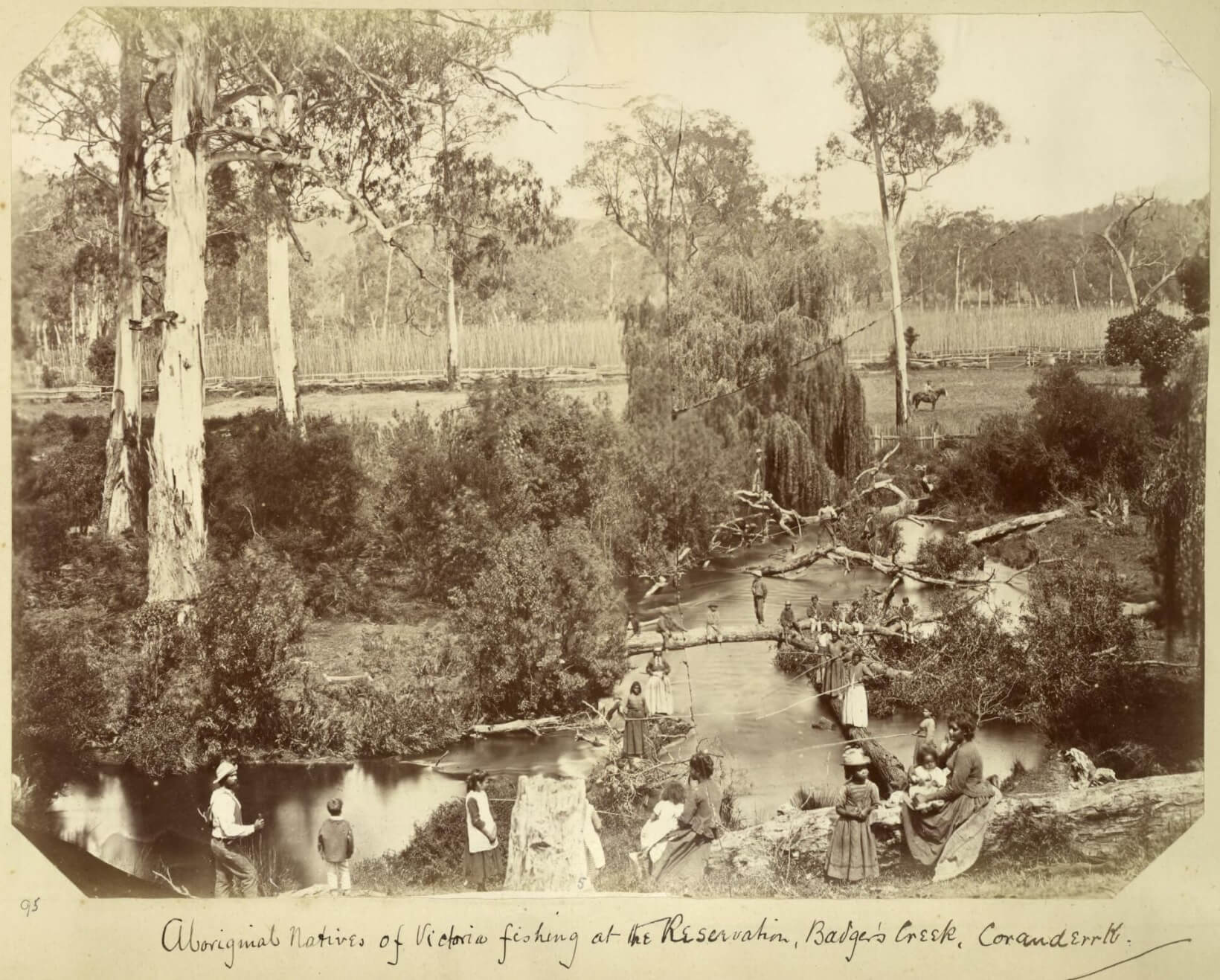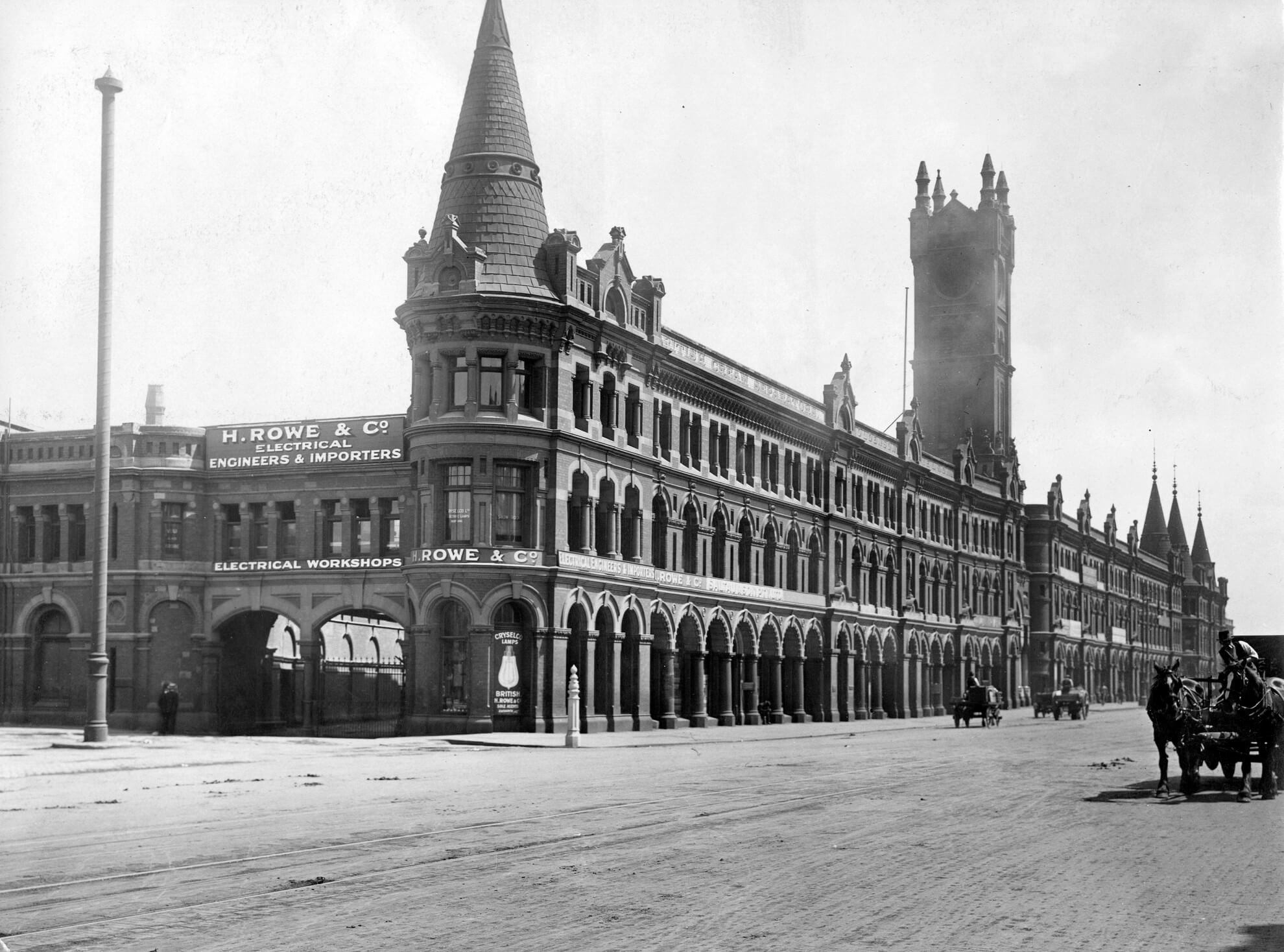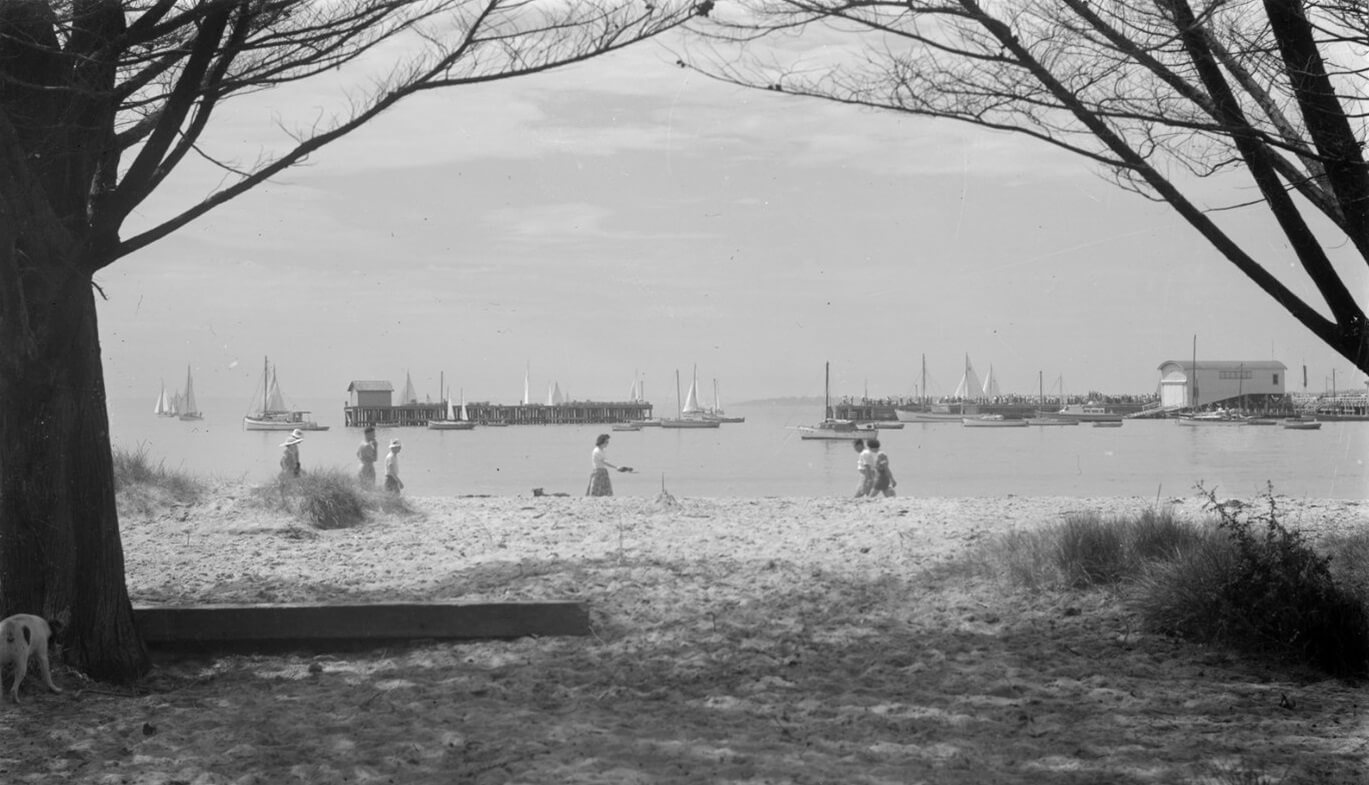Warning: Some readers might find the terminology used here offensive. It is included in the interests of historical accuracy.
Fishing was one of Victoria’s earliest industries. At first most fish was caught and consumed locally, since it could not be transported safely over any distance. All kinds of fish and shellfish were popular in the early colony. Oysters were a particular favourite. In the early years fresh fish was traded on the banks of the Yarra between the Falls and Queen‘s Wharf. A small fish market was included in the Western Market from 1841, but the first fish market per se was built in 1865 on Flinders Street near Princes Bridge. Before refrigeration fish was sold either fresh or salted.
First Nations people were accomplished fishermen and women. Along the coast and the inland waterways, fish (including eels) and shellfish formed an important part of their diet. The Woi wurrung (Wurundjeri) people were known to move inland in line with the seasons, and knew the migrating habits of various species, including eels, intimately. The large area of wetland known as Bolin Bolin was a meeting place for members of the Kulin nation, who gathered there in late Summer to catch migrating eels and to hunt kangaroo. First Nations people used fishing lines, spears, nets and constructed fish traps in waterways. But as more and more of the Yarra was occupied by Europeans and the wetlands were drained, this important source of food was less available. After the 1840s the Kulin were also banned from coming into the settlement of Melbourne and were confined, increasingly, to mission stations or reserves in land. Even so, First Nations people continued to fish whenever they could. Some living in coastal regions later found employment in the fishing industry, although the proportion of First Nations people employed in the contemporary fishing industry is only about one per cent. (2016 Census)
In this picture artist S T Gill shows men using light to attract fish to the surface at night. Small fires are burning on boards set across the bows of their canoes. One man in the foreground appears to have a line in the water, while the men standing may be using spears, or poles to propel the canoes.
Photograph entitled ‘Aboriginal Natives of Victoria fishing at the Reservation, Badger’s Creek, Coranderrk’. Photographer Fred Kruger. C. 1870
Reproduced courtesy National Library of Australia
Although the paintings by S T Gill implied that fishing was a male preserve amongst First Nations people, this photograph makes it clear that women also fished. Most of those photographed fishing in Badger’s Creek in this photograph from 1870 are women and children of both sexes.
Refrigeration was a huge boost to the fishing industry, allowing a catch to be frozen for transport and export. The importance of the fishing industry was expressed in this exuberant fish market and cold storage facility, built on the corner of King and Flinders streets in 1890. It was demolished in 1959 to make way for the King Street Bridge.
Fishing Fleet, Front Beach, Queenscliff, Vic.
Postcard, c. 1950s
Reproduced courtesy State Library Victoria
The fishing industry continued to be important to regional coastal economies throughout the 1900s and into the twenty-first century. This postcard captured the fishing fleet at Queenscliff in the 1950s.




